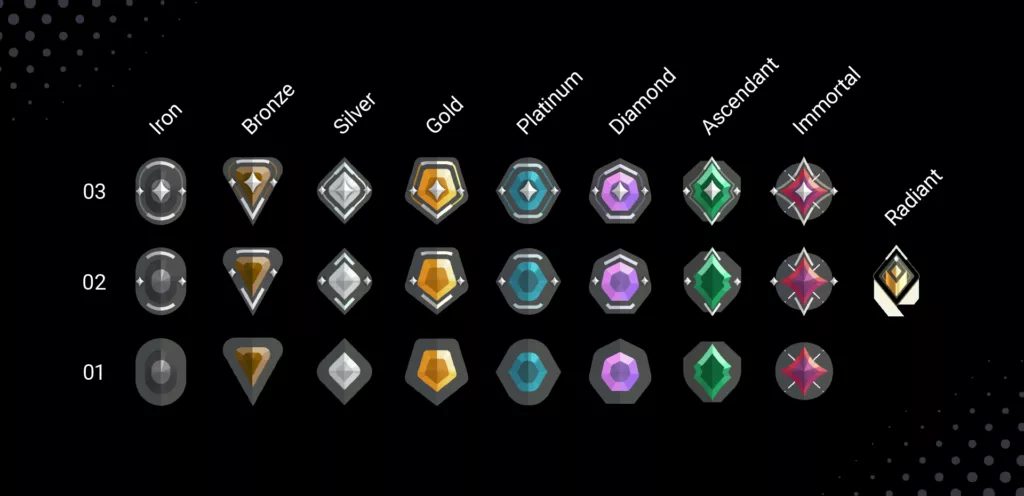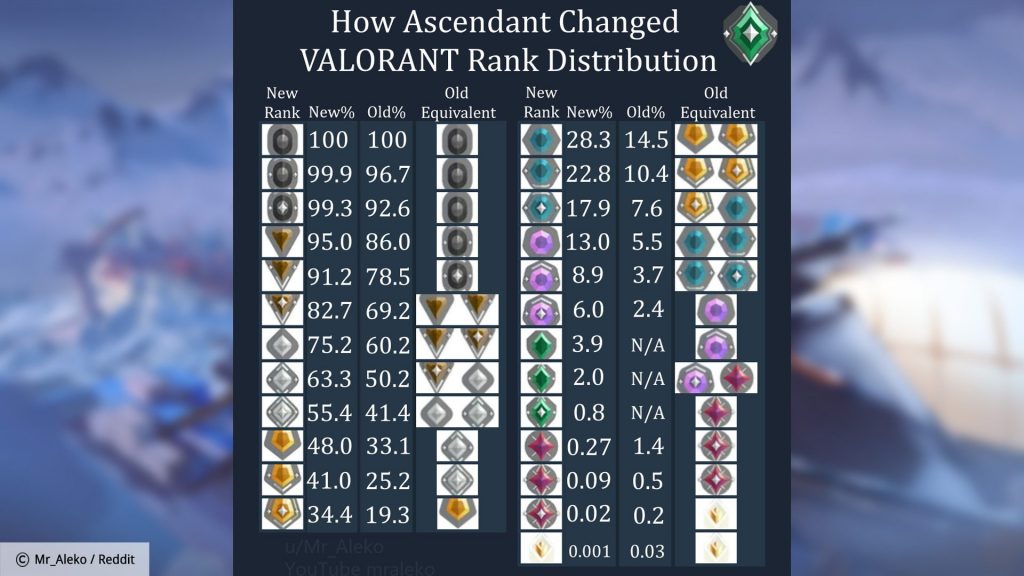At Blix, we know that understanding Valorant’s ranking system can feel like trying to decode an alien language while defusing a Spike at 0.1 seconds—stressful, confusing, and often ending in disaster. That’s why we’ve built this clear, up-to-date guide on the competitive ladder in 2025. Valorant’s ranking system intricately balances visible Rank Rating (RR) and hidden Matchmaking Rating (MMR).
That is to assess player skill. With seasonal resets and an emphasis on both individual performance and teamwork, climbing isn’t just about sharp aim—it’s about consistency, adaptability, and knowing the system you’re fighting through. And if the climb’s still feeling uphill in flip-flops, check out our guide to top beginner mistakes and how to fix them to patch those early pitfalls before they tank your RR.
Contents
- 1 Highlights
- 2 The Rank Breakdown
- 3 MMR vs. RR: The Double Life of Your Rank
- 4 Placement Matches & Season Resets
- 5 Party Up or Solo Queue: The Stack Impact
- 6 Behavior, Penalties & Performance Factors
- 7 Rank Distribution in 2025
- 8 How to Climb: Tips Backed by System Logic
- 9 Valorant Rank System: 5 Quick FAQs
Highlights
- The Rank Breakdown
- MMR vs. RR: The Double Life of Your Rank
- Placement Matches & Season Resets
- Behavior, Penalties & Performance Factors
- How to Climb: Tips Backed by System Logic
- Additional: 5 Quick FAQs to the Valorant Rank System
The Rank Breakdown

Valorant’s competitive hierarchy consists of nine tiers: Iron, Bronze, Silver, Gold, Platinum, Diamond, Ascendant, Immortal, and Radiant. Each tier, except Radiant, is divided into three divisions (e.g., Gold 1, Gold 2, Gold 3). Radiant stands alone as the pinnacle, reserved for the top 500 players in each region.
As of 2025, the rank distribution is as follows:
- Iron: ~6.8%
- Bronze: ~16.9%
- Silver: ~21.6%
- Gold: ~22%
- Platinum: ~16.1%
- Diamond: ~10.3%
- Ascendant: ~5%
- Immortal: ~0.88%
- Radiant: ~0.02%
This distribution is quite clear: most players reside within the Silver to Gold tiers, and climbing beyond these ranks goes instantly more challenging.
MMR vs. RR: The Double Life of Your Rank
Valorant has two metrics of performance:
- Matchmaking Rating (MMR): This one’s a hidden value, but by it, the game counts the player’s true skill level. MMR influences the matchmaking process, as you may guess. Determines the caliber of opponents faced.
- Rank Rating (RR): The visible score displayed in-game, ranging from 0 to 100 within each rank division. Accumulating 100 RR points promotes a player to the next division. Obviously, dropping to 0 can, on the contrary, end up (or rather end down) in demotion.
The interaction between MMR and RR is crucial. If a player’s MMR exceeds their current RR, they will gain more RR for wins and lose less for losses, facilitating faster progression. Conversely, if RR surpasses MMR, RR gains diminish. Losses become more punitive: clear signal to improve performance. You are the higher rank now behave accordingly!
Placement Matches & Season Resets
Players must reach account level 20 and complete five placement matches to engage in ranked play. These initial games determine the starting rank, heavily influenced by performance.
In 2025, Riot transitioned from the “Episode” system to a year-long “Season” structure, divided into six Acts. Ranks undergo a reset at the commencement of each Season and mid-season point. Post-reset, players must complete placement matches to recalibrate their rank, ensuring the competitive landscape remains dynamic and reflective of current skill levels.
Party Up or Solo Queue: The Stack Impact
Valorant’s matchmaking system adjusts based on party size:
- Solo/Duo Queue: Offers balanced matchmaking, pairing players with and against others of similar MMR.
- Five-Stack: Sure thing, playing with a full team is often more enjoyable. But the catch: it introduces RR penalties to maintain fairness, especially if there’s a significant skill disparity within the group.
These adjustments ensure that competitive integrity is upheld, regardless of party composition.
Behavior, Penalties & Performance Factors

Player behavior (as well as, unsurprisingly, their in-game commission) harshly impacts rank progression:
- Match Outcome: Winning is paramount. Individual performance metrics (K/D/A) are considered, and securing a victory has the most substantial effect on RR.
- Round Differential: Dominant wins (e.g., 13-3) yield more RR than narrow victories. No wonder again: here, everybody likes consistent performance throughout a match.
- Individual Performance: Every player counts.. initially. Exceptional play can slightly boost RR gains in lower ranks, aiding in faster progression.
- Behavioral Penalties: Actions such as dodging, going AFK, or receiving reports can negatively affect MMR and RR, hindering rank advancement.
Rank Distribution in 2025
Simple: we look at the current rank distribution and get insight into the competitive landscape:
- Iron to Bronze: ~26% of players
- Silver to Gold: ~44%
- Platinum to Diamond: ~23%
- Ascendant and above: ~6%
This data underscores the challenges of climbing beyond the mid-tier ranks, with a significant portion of the player base concentrated in Silver and Gold.
How to Climb: Tips Backed by System Logic
- Consistent Play: regular matches – all you really need to maintain and improve performance.
- Agent Specialization: Focus on grasping a select few agents. We always stress: it is totally crcial to enhance game sense and strategy.
- Team Communication: Coordinate with teammates for strategic plays and callouts.
- Avoid Negative Behaviors: Steer clear of actions that can lead to penalties, such as dodging or unsportsmanlike conduct.
- Adapt and Learn: Review gameplay to identify areas for improvement and adapt strategies accordingly.
Valorant Rank System: 5 Quick FAQs
What happens if I win but perform terribly?
You may still gain RR, but less than usual if you’re in lower ranks. In higher ranks, poor performance in a win might result in minimal or even no RR gain—Riot rewards both teamwork and contribution.
Can I skip divisions or ranks?
Yes, if your hidden MMR is significantly higher than your current RR, you can “rank skip” after hitting 100 RR—jumping past divisions or even full tiers. It’s rare but satisfying.
Do custom or unrated matches affect my rank?
Nope. Only competitive matches impact your MMR and RR. Customs and unrated are safe for practice without risking your standing.
Does dodging (leaving in agent select) affect MMR?
Not directly, but consistent dodging can lead to penalties like reduced RR for future matches or queue delays. Basically, dodge too often, and Riot starts frowning.
Is Radiant rank the same across regions?
No. Radiant is regional, with only the top 500 players per region earning the title. A Radiant in NA isn’t automatically Radiant in EU—and vice versa.



